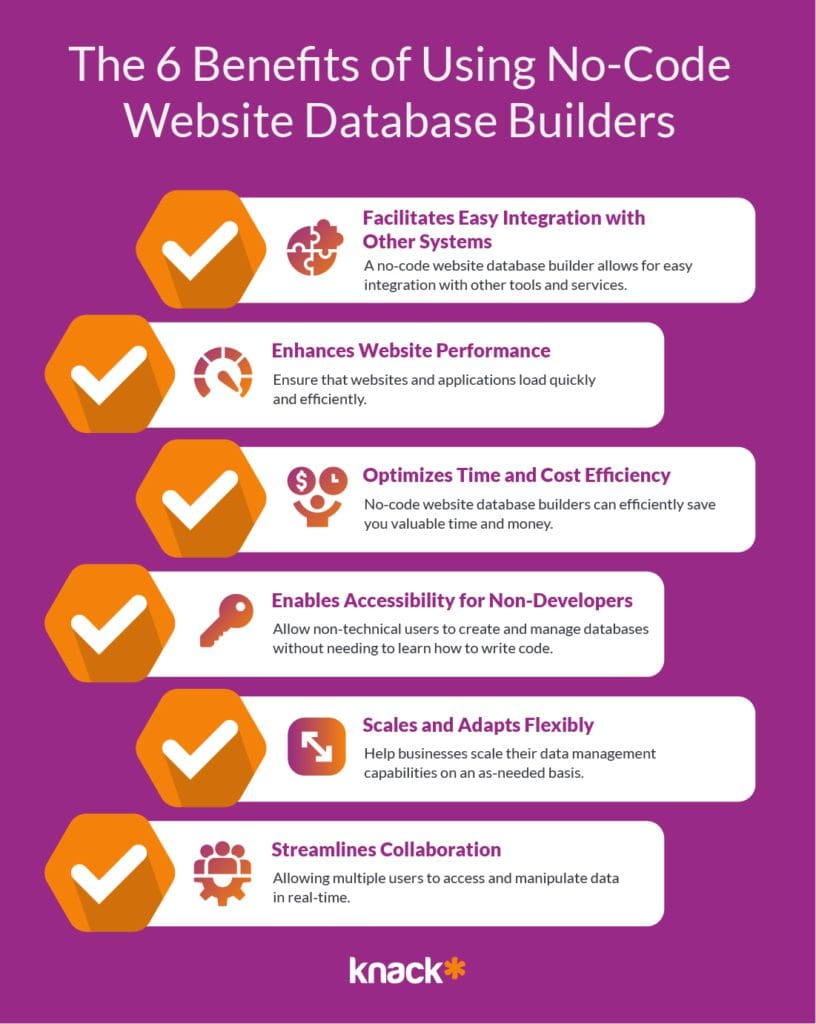Discover Exactly How Scalable Databases Can Be Made Use Of Without Coding to Enhance Your Service Procedures
In today's hectic company setting, the capability to take care of and analyze information successfully is vital. no-code. Scalable databases, specifically when coupled with no-code remedies, supply a transformative technique that equips non-technical users to improve procedures.
Comprehending Scalable Databases
Scalable databases are essential for contemporary service procedures, permitting organizations to successfully manage boosting volumes of data without compromising efficiency. These databases are made to expand and adjust to the altering needs of a business, guaranteeing that they can handle larger datasets and even more complex inquiries as business demands evolve.
Understanding scalable databases includes recognizing their two main kinds: upright scaling and horizontal scaling. Upright scaling, or "scaling up," entails adding even more power (CPU, RAM) to an existing web server to improve performance. Conversely, straight scaling, or "scaling out," requires including more web servers to disperse the load, which commonly results in better adaptability and fault resistance.
Another vital aspect is the architecture of scalable databases, which can be either non-relational or relational. Relational data sources, such as MySQL and PostgreSQL, are structured and make use of SQL for inquiries, while non-relational databases, like MongoDB and Cassandra, supply more versatility with unstructured data.
Ultimately, understanding scalable data sources is crucial for services aiming to utilize information as a calculated asset, allowing them to remain affordable in a significantly data-driven setting.

Benefits of No-Code Solutions
Unlocking the possibility of no-code options equips businesses to enhance procedures and enhance efficiency without the demand for considerable shows knowledge. These platforms enable non-technical users to produce, modify, and take care of databases effortlessly, hence equalizing access to modern technology throughout teams.
Among the key benefits of no-code options is their rate of implementation. Services can quickly release applications and automate processes, dramatically decreasing the moment invested on development cycles. This dexterity enables organizations to respond promptly to market changes and consumer needs, promoting an affordable side.
Additionally, no-code platforms minimize dependence on IT departments for everyday tasks, permitting technical teams to concentrate on more complicated tasks that require specialized skills. This change not just enhances resource appropriation yet also advertises innovation within the organization.
Cost-effectiveness is another benefit, as no-code solutions can reduce development and upkeep expenses. By lessening the need for coding experience, business can harness the capabilities of their existing labor force without the expenses of employing additional workers.
Popular No-Code Database Tools
The surge of no-code options has brought about the emergence of various database devices that provide to companies looking for effectiveness and access. These devices encourage individuals with restricted technological expertise to develop, take care of, and adjust databases flawlessly.

Caspio attracts attention for its capability to construct internet applications without any coding. It allows businesses to develop robust data sources and deploy applications quickly, dealing with different industry requirements. Similarly, Knack offers effective information and user-friendly user interfaces administration capacities, making it possible for companies to develop custom applications tailored to their operations.

Use Cases in Company Procedures
Exactly how can organizations utilize data source tools to improve their operations? Scalable data sources provide organizations with powerful abilities to manage and examine data without the demand for extensive coding expertise. These tools can streamline various business processes, eventually causing improved performance and efficiency.
One prominent usage situation is customer partnership management (CRM) Services can make use of scalable data sources to track customer interactions, preferences, and comments, allowing personalized interaction and better solution. By centralizing this information, groups can team up better and react to consumer demands in real-time.
Another significant application is supply monitoring. Firms can employ no-code data source tools to check stock degrees, track shipments, and projection need. This makes sure ideal stock degrees, reduces waste, and reduces stockouts.
Additionally, job administration can profit from scalable data sources by permitting groups to manage tasks, due dates, and resources in an unified platform. With real-time updates and information visualization, job supervisors can make educated choices.
Getting Began With Execution
Applying scalable databases in company procedures needs a structured technique to guarantee effective assimilation and utilization. The very first step is to carry out a complete requirements assessment, identifying details organization demands, information kinds, and anticipated growth patterns. This fundamental understanding will certainly lead the selection of the appropriate data source service.
Next, choose an easy to use, no-code data source system that straightens with your operational objectives. no-code. Numerous modern remedies find more information supply intuitive user interfaces, enabling Visit This Link non-technical individuals to handle data efficiently. After selecting a system, establish a clear information style that outlines exactly how data will certainly be arranged, accessed, and kept
Training is critical; make certain that group members are geared up with the required skills to use the data source. Think about giving workshops or tutorials to acquaint staff with the system's capabilities.
Final Thought
Finally, the integration of scalable data sources with no-code services provides substantial advantages for service operations. These platforms empower non-technical users to efficiently manage and assess data, facilitating boosted decision-making and collaboration. By taking on devices such as Airtable and Notion, organizations can simplify processes and reduce dependancy on IT resources. Eventually, leveraging these technologies can cause enhanced efficiency and functional performance, placing services for continual growth in a competitive landscape.
One prominent no-code data source tool is Airtable, which integrates the capability of a spreadsheet with the power of a database.Exactly how can businesses leverage database devices to boost their procedures? Businesses can utilize scalable databases to track consumer communications, preferences, and comments, making it possible for individualized communication and better solution.Applying scalable data sources Continued in business procedures requires a structured method to guarantee effective assimilation and use.In final thought, the integration of scalable data sources through no-code options presents substantial benefits for service operations.
Comments on “No-Code Open System Database Development: Streamline Complicated Growth Jobs”